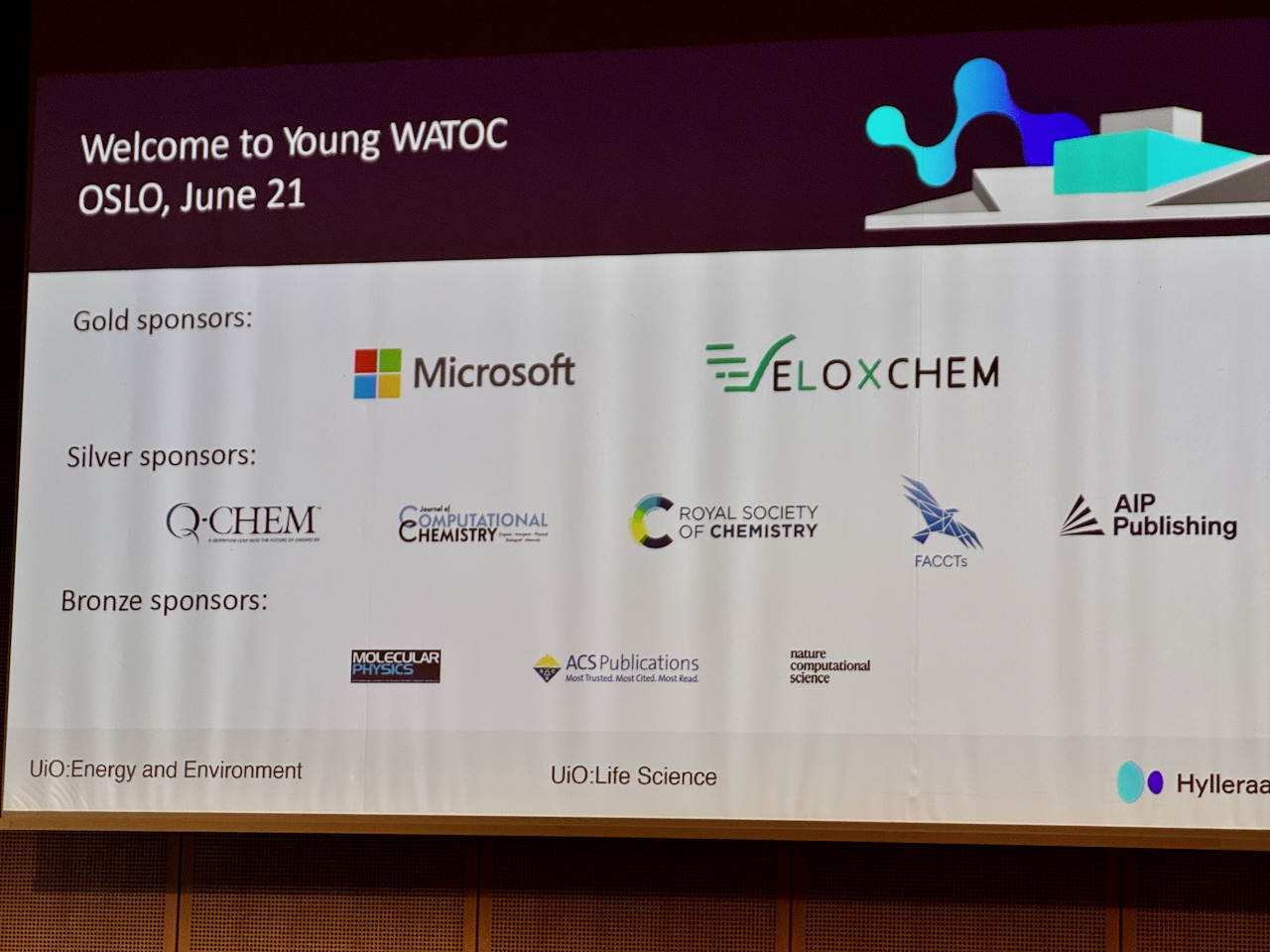Depending on your exact definition of doing science, keeping track as precise as possible of your observations is an essential part of doing science. The precision should be high enough that mistakes are obvious. This pattern is, of course, not limited to doing science and we see this in open source development too. Unfortunately, in the modern way of doing science, this is not getting the attention it should get.
Rogue Scholar Posts
This are just a few insights I have got from some of the talks I attended. As usual, this does not represent a report on the WATOC congress itself, but simply some aspects that caught my personal eye. Frank Neese talked about his Bubblepole approximation for large molecules.[cite]10.1021/acs.jpca.4c07415[/cite] And he was not kidding – large.
This tutorial shows two ways to accomplish skeletal editing reactions in the RDKit: By using Reaction SMARTS or atom editing. As my collaborator Dr. Phyo Phyo Zin posted in How to Use Skeletal Editing in Drug Discovery: Key Benefits &
One thing I was still missing in BioHackrXiv was a place with an overview of: 1. all biohackathons, 2. all preprints linked to a biohackathon, 3. an RSS feed for new papers of a biohackathon.

The WATOC congresses occur every three years. WATOC25, the 13th in a series which started in 1987 takes places tomorrow in Oslo, Norway, The day before the main event there is something new – a session just for early career researchers or “Young WATOC”. As an “old” WATOCer, I dropped into the opening session and was delighted to find a packed auditorium, with literally standing room only comprising mostly young researchers in their 20s.
I am in the process of revising my annual lecture to first year university students on the topic of “curly arrows”. I like to start my story in 1924, when Robert Robinson published the very first example[cite]gg9g[/cite] as an illustration of why nitrosobenzene undergoes electrophilic bromination in the para position of the benzene ring. I follow this up by showing how “data mining” can be used to see if this supports his assertion.
I could not find the time earlier to report (reason), but three weeks ago we passed the fourth milestone release of the CCZero IUPAC names found in literature collection. This release contains 200026 IUPAC names, 168702 unique names, reflecting 116207 unique InChIKeys. Time for an update of the One Million IUPAC names project.
Last week, the Wikidata and Sister Projects event tooks place. The presentations are recorded, and I strongly encourage you to check the schedule.
This week the 13th International Conference on Chemical Structures took place (see also this Scholia overview or this overview of the full ICCS history). This is the conference I first joined 20 years ago as a PhD student presenting a poster (see these past blog posts). Of course, I am actually co-organizer nowadays (actually, co-treasurer). Organizing a meeting with just over 200 participants, and I like to thank Gerard and Willem in
Tom recently emailed me this question: Do you know how to find out how many of the compounds that appear in the chemical literature are mentioned just once? Intrigued, I first set out to find out how many substances , as Chemical Abstracts refers to the them, there were as of 5 June, 2025 . There is a static estimate here (219 million), but to get the most up to date information, I asked CAS directly.

“You dropped a hundred and fifty grand on a f***** education you coulda' got for a dollar fifty in late charges at the public library.” —Good Will Hunting